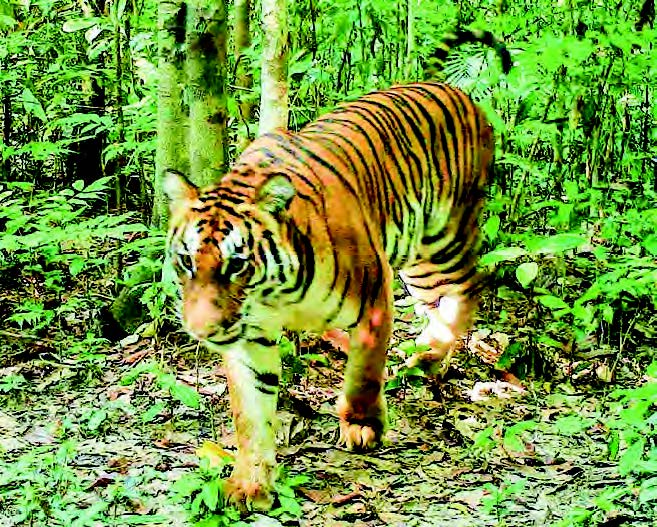The Htamanthi Wildlife Sanctuary, located in Khamti and Homalin townships in Khamti District, Sagaing Region, will install 72 additional camera traps to conduct research on Bengal tigers, according to the sanctuary warden’s office.
Last year, a total of 24 camera traps were installed during the tiger census, capturing images of Bengal tigers, Sun bears, and other rare wildlife, and this year, 72 camera traps will be installed from November in the 2025-2026 financial year to monitor the survival of these species.
“Last year, 24 camera traps were deployed in the Htamanthi Wildlife Sanctuary, recording nearly 22 tigers. This November, 72 more camera traps will be installed to further monitor the wildlife ecosystem, and batteries for the new cameras have already been ordered. The presence of Bengal tigers in Htamanthi Wildlife Sanctuary in northern Myanmar, and Indochinese tigers in the Taninthayi Forest reserve in southern Myanmar, is a source of national pride. We all need to work together to ensure their survival,” said an official from the Htamanthi Wildlife Sanctuary warden’s office.
The Htamanthi Wildlife Sanctuary is currently conducting a tiger census and survey, and installing research camera traps at four major streams: Nanpilin, Naneisu, Nanbugun, and Nanyanyin. Last year, camera traps were installed in the Nanyanyin area to record number of tigers, and this year, 72 cameras are being installed at three points in Nanbugun.
The 531,456-acre Htamanthi Wildlife Sanctuary was established in 1974 and designated as an ASEAN heritage park on 8 October 2019.
In Myanmar, tigers are protected under Section 19 (a) of the Conservation of Biodiversity and Protected Areas Law. They are currently found in only 13 countries — Myanmar, Russia, China, India, Indonesia, Bangladesh, Bhutan, Cambodia, Laos, Malaysia, Nepal, Thailand, and Vietnam — and are being protected to prevent extinction.
Nyein Thu (MNA)/TH
#TheGlobalNewLightOfMyanmar


